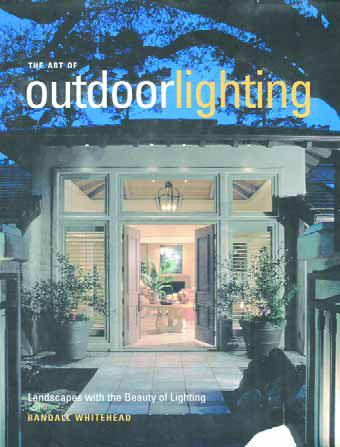Night Vision

The fine points of landscape lighting are the worthy subject of The Art of Outdoor Lighting by Randall Whitehead (Rockport Publishers, Gloucester, Mass., 1999). It’s a wonderful place to begin a journey of discovery: The text consists of 192 heavily (and beautifully) illustrated pages that break the discipline of lighting design down to several practical areas of concern – and there’s a generous section all about ways to light waterfeatures.
The verbiage throughout is both brief and focused, leaving most of the space for a parade of beautiful photographs of public and residential spaces. Simply by flipping through the pages and looking at some of these projects, you begin to see just how much interest and beauty can be created when you think about viewing and using a space at night.
One of the most useful section deals with the various lighting effects you can achieve. There are discussions of familiar techniques, such as the up-lighting of trees and structures, path lighting and spot lighting. A large portion of the section, however, deals with more artistic effects, including moonlighting and silhouetting with backlight.
Along the way, Whitehead spends a good amount of space discussing methods for concealing fixtures – and argues effectively for using fewer fixtures in some cases. There’s also a wonderfully concise and informative section on technology, including short courses on 110-volt systems, low-voltage lighting and fiberoptics – which he covers almost exclusively as a technology used in conjunction with water.
Particularly important is a section on what he calls “lighting mistakes” and how you can avoid such pitfalls as shining outdoor lights into houses or creating monotony by placing lighting fixtures at obvious intervals. On a more positive note, I greatly enjoyed his discussions of using light to bring the inside out by illuminating “exterior rooms” and of lighting exterior views with interior focal points in mind.
His section on the lighting of water is a real eye-opener. He makes a number of points clearly and effectively and, in a couple of cases, challenges some common assumptions that I and others I know have made throughout our careers. One of those is that you should always light the interior of a swimming pool: In cases where pools have dark interior surfaces, he suggests instead that you should leave the water dark to exploit the potential for reflections of lighted elements above the waterline – an interesting idea I’ll consider as a possibility from now on.
The book concludes with a section that credits the landscape architects, lighting designers and photographers who provided images for the book – an extensive list that might prove to be a terrific resource for watershapers looking for help with their lighting designs and installations.
I came away from the text with a strong impression that most watershapers, myself included, need to know more about how much we can accomplish with lighting, whether it’s for small, intimate spaces or large areas with multiple layers and varieties of key viewpoints. I also more fully understand how a space takes on different dimensions and aesthetic qualities depending on how you choose to light it.
As I noted at the outset, this book is a great starting place and worth a look if for no other reason than it shows just how far you can go once you and your clients begin considering what can be done with outdoor spaces once the sun goes down.
Mike Farley is a landscape designer with more than 20 years of experience and is currently a designer/project manager for Claffey Pools in Southlake, Texas. A graduate of Genesis 3’s Level I Design School, he holds a degree in landscape architecture from Texas Tech University and has worked as a watershaper in both California and Texas.










